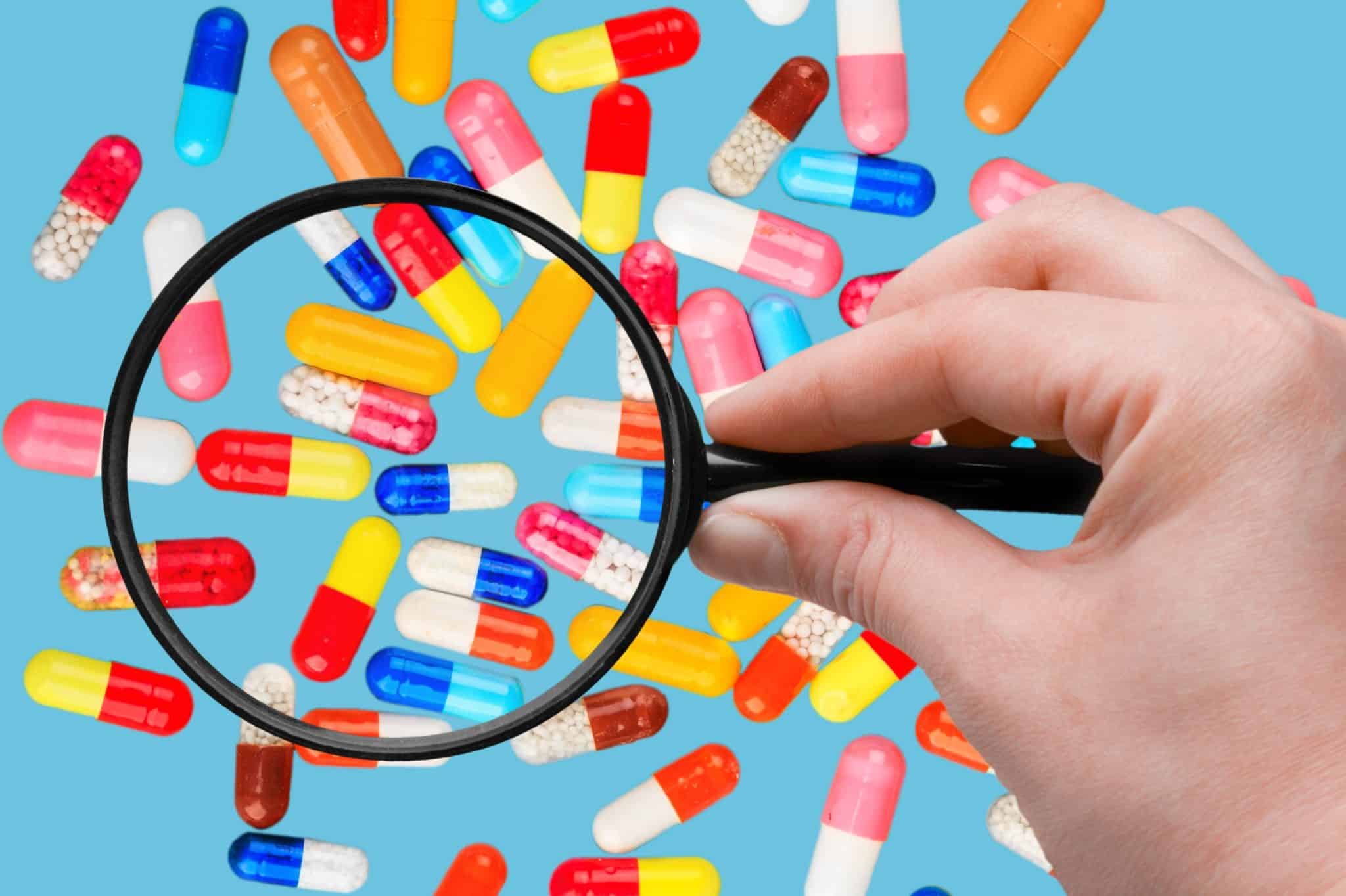Table of Contents
Understanding the Impact of FDA Approval on Healthcare
FDA approval is more than just a regulatory checkpoint; it’s a crucial determinant of a medical product’s safety, effectiveness, and availability. When a product receives FDA approval, it means that it has successfully passed through an exhaustive evaluation process that includes extensive preclinical and clinical testing. This approval is not just a formal stamp; it is a rigorous assessment that directly impacts public health by ensuring that the treatments and interventions available to patients are both safe and effective.
The journey to FDA approval begins with preclinical studies, where a product is tested in laboratory settings using cell cultures or animal models. These early tests are essential for understanding the product’s pharmacological properties, potential toxicity, and mechanisms of action. This preliminary data is crucial in shaping the design and methodology of subsequent clinical trials.
Clinical trials, the cornerstone of the FDA approval process, are conducted in multiple phases, each with a specific focus. The initial phase involves a small group of healthy volunteers to assess safety and identify any potential side effects. As the trials progress, the product is tested on larger groups of patients with the target condition to determine its efficacy and optimal dosage. The final phase before approval includes a broader and more diverse population to confirm safety and effectiveness, often in comparison to existing treatments or a placebo. Even after approval, the product continues to be monitored in real-world use to ensure its long-term safety and effectiveness.
Throughout this entire process, the FDA plays a critical role as the regulatory authority, meticulously reviewing all scientific evidence and ensuring that the product meets the highest standards required for approval. This oversight extends beyond just the clinical performance of the product; it also includes an evaluation of manufacturing processes, labeling accuracy, and risk management strategies. The FDA’s risk-based approach prioritizes resources and scrutiny for products that pose the greatest potential risks, ensuring that only those with a favorable risk-benefit profile make it to the market.
FDA approval is not just a bureaucratic formality—it is a vital safeguard for public health. It represents the culmination of extensive scientific research, rigorous evaluation, and careful consideration of the risks and benefits involved. Understanding the significance of FDA approval allows individuals to make informed decisions about their healthcare options, confident in the knowledge that approved products have undergone thorough scrutiny and meet the highest standards of safety and efficacy. This approval process ensures that when patients choose a treatment, they are opting for something that has been rigorously tested and proven to be safe and effective.
What is FDA Approval?
FDA approval is the ultimate validation in the U.S. for medical products, ensuring they meet the highest standards of safety, efficacy, and quality before reaching the public. Overseen by the Food and Drug Administration (FDA), this stringent process is essential for safeguarding public health.
Definition of FDA Approval
FDA approval signifies that a medical product has passed an exhaustive evaluation and is deemed safe and effective for its intended use. This endorsement is only granted after the FDA reviews a wealth of scientific data, including preclinical studies and clinical trials, assessing the product’s safety, benefits, and risks.
The FDA Approval Process
The pathway to FDA approval, while tailored to the product type, follows a structured sequence:
- Preclinical Testing: Products are initially tested in labs and on animals to understand their safety and potential mechanisms. These studies shape the design of human trials.
- Investigational New Drug (IND) Application: For drugs and biologics, an IND application is submitted to the FDA, detailing the proposed clinical trial plan and supporting preclinical data. The FDA ensures the trial’s ethical and scientific integrity before it proceeds.
- Clinical Trials: Conducted in phases:
- Phase I: Tests safety and dosage in a small group of healthy volunteers.
- Phase II: Explores efficacy in patients with the target condition.
- Phase III: Compares the product’s effectiveness against current treatments or placebos in larger patient groups.
- Phase IV: Post-approval monitoring of the product’s long-term safety and effectiveness in real-world use.
- New Drug Application (NDA) or Biologics License Application (BLA): Upon trial completion, comprehensive data on the product’s safety, efficacy, and manufacturing is submitted. The FDA rigorously reviews this, often consulting an advisory committee before making a decision.
- FDA Approval: If the product meets the required standards, it is approved for marketing and distribution to healthcare providers and patients.
Criteria for FDA Approval
FDA approval hinges on a meticulous evaluation of scientific evidence, focusing on:
- Safety: The product must present an acceptable safety profile, where benefits surpass risks.
- Efficacy: The product must effectively treat or prevent the condition it targets.
- Quality: Manufacturing must adhere to Good Manufacturing Practice (GMP) standards, ensuring product consistency, purity, and potency.
- Labeling: Accurate information on indications, dosage, administration, precautions, and adverse reactions must be provided.
FDA approval is the culmination of a rigorous process designed to ensure medical products are safe, effective, and of high quality. By adhering to these strict requirements, FDA-approved products offer healthcare providers and patients confidence in their use, ultimately promoting public health and safety.
How Does FDA Approval Ensure Safety and Efficacy?
FDA approval is essential for protecting public health by ensuring that medical products meet rigorous safety and efficacy standards before reaching patients. This oversight involves preclinical testing, clinical trials, and post-market surveillance to guarantee the safety and effectiveness of products throughout their lifecycle.
Overview of FDA’s Role in Ensuring Safety and Efficacy
The FDA operates under a stringent regulatory framework designed to ensure that pharmaceuticals, medical devices, biologics, and even food and cosmetics meet strict criteria for safety, efficacy, and quality. This framework is a safeguard for public health, requiring products to undergo thorough evaluation before they are made available to consumers.
Requirements for Clinical Trials
Clinical trials are the foundation of FDA approval, providing critical data on the safety and efficacy of medical products in humans. These trials are conducted in phases, each with specific goals:
- Phase I: Involves a small group of healthy volunteers to assess safety, tolerability, and pharmacokinetics. This phase helps establish optimal dosages and identify potential side effects.
- Phase II: Expands the study to include patients with the target condition, focusing on preliminary efficacy and safety in a controlled environment. The data gathered here is crucial for designing Phase III trials.
- Phase III: Involves a larger patient population to compare the product’s efficacy and safety against existing treatments or a placebo. This phase provides the definitive evidence needed for regulatory approval.
Post-Market Surveillance and Monitoring
FDA approval marks the beginning of ongoing vigilance, not the end. Post-market surveillance ensures that approved products continue to be safe and effective when used by the general public. This process includes monitoring adverse events, conducting post-market studies, and addressing emerging safety concerns.
The FDA uses several mechanisms for post-market surveillance:
- Adverse Event Reporting: Healthcare providers, manufacturers, and consumers can report adverse events and product issues through the FDA’s MedWatch program, which helps identify potential safety concerns early.
- Post-Market Studies: The FDA may require manufacturers to conduct further studies to evaluate a product’s safety and effectiveness in real-world settings. These studies are vital for understanding long-term outcomes and identifying rare or unexpected adverse events.
- Risk Evaluation and Mitigation Strategies (REMS): If significant safety concerns arise, the FDA can require REMS to mitigate risks, which may include additional safety monitoring, patient education, or restricted distribution.
FDA approval is a rigorous process that ensures medical products are safe and effective before and after they reach the market. Through continuous evaluation and monitoring, the FDA maintains a vigilant stance, protecting public health and ensuring the ongoing safety of approved treatments.
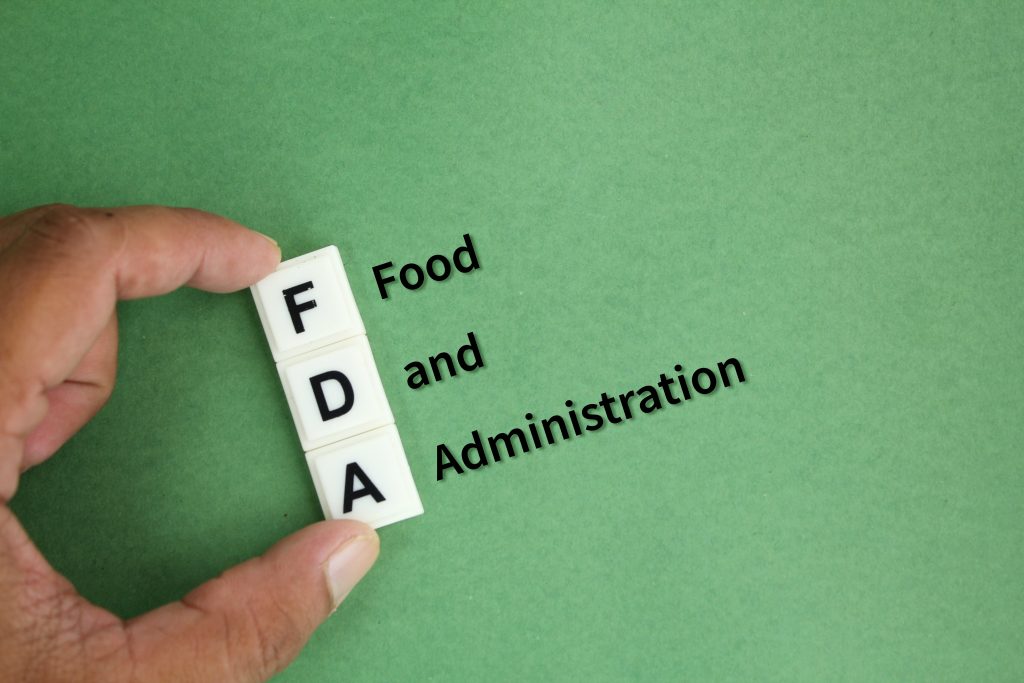
What Types of Products Require FDA Approval?
The Food and Drug Administration (FDA) plays a critical role in safeguarding public health by regulating various products to ensure they meet strict standards for safety, efficacy, and quality. The range of products under FDA oversight is vast, each with its specific approval process tailored to its unique nature and intended use.
Pharmaceuticals
Pharmaceutical drugs, encompassing both prescription medications and over-the-counter (OTC) remedies, undergo the most rigorous FDA scrutiny. These products must pass extensive testing to prove their safety, efficacy, and quality. The approval process includes:
- Prescription Medications: These drugs must undergo a comprehensive review involving preclinical studies and multiple clinical trial phases. The FDA evaluates whether the medication’s benefits outweigh the risks, ensuring it meets all necessary criteria for approval.
- Over-the-Counter Drugs: Although generally deemed safe for unsupervised use, OTC drugs still undergo FDA review to confirm their safety, efficacy, and proper labeling. These products must prove they are safe and effective for their intended use and that consumers can use them correctly without a healthcare provider’s supervision.
Medical Devices
Medical devices, ranging from simple tools to complex technologies, are categorized into three classes based on their risk levels:
- Class I (Low Risk): Devices like tongue depressors and bandages require minimal regulatory oversight and are often exempt from premarket notification.
- Class II (Moderate Risk): Devices such as powered wheelchairs and infusion pumps need a premarket notification (510(k)) to demonstrate they are substantially equivalent to an already legally marketed device.
- Class III (High Risk): Devices like implantable pacemakers and artificial heart valves face the most rigorous review, requiring premarket approval (PMA) based on comprehensive scientific evidence of safety and efficacy.
Approval of medical devices requires proof that the device is not only safe and effective but that its benefits outweigh its risks. Manufacturers must submit extensive data, including clinical evidence, to support their FDA approval applications.
Biologics
Biologics, which include vaccines, blood products, and gene therapies, are derived from living organisms and are regulated by the FDA’s Center for Biologics Evaluation and Research (CBER). The approval process for biologics is stringent, requiring:
- Preclinical Testing: Initial safety and efficacy assessments.
- Clinical Trials: Multiple phases to gather extensive scientific evidence.
The FDA thoroughly evaluates this evidence to ensure that biologics meet safety, purity, and potency standards, and that their benefits outweigh potential risks.
Food and Cosmetics
While not all foods and cosmetics require FDA approval, the agency regulates these products to ensure they are safe and properly labeled. This oversight includes:
- Food Additives and Color Additives: These must be approved by the FDA to confirm they do not pose health risks.
- Cosmetic Ingredients: The FDA ensures that ingredients used in cosmetics are safe for consumers.
FDA approval is essential for pharmaceuticals, medical devices, biologics, and certain food and cosmetic products to guarantee they are safe, effective, and of high quality before reaching consumers. Each product type undergoes a specific regulatory process designed to address its unique characteristics and uses. Through this rigorous oversight, the FDA aims to protect public health and maintain consumer trust in the safety and efficacy of available products.
How Long Does FDA Approval Take?
The FDA approval timeline can vary significantly based on product type, complexity, and available data. While the FDA aims to expedite approvals, the process remains rigorous to ensure safety and efficacy.
Average FDA Approval Timeline
The FDA approval process involves several key stages, each with its own timeline:
- Preclinical Testing: This stage, involving laboratory studies and animal testing, can last from several months to several years, depending on the product’s complexity and preliminary data.
- Investigational New Drug (IND) Application: For drugs and biologics, the IND application review can take several months, during which the FDA evaluates preclinical data and clinical trial plans.
- Clinical Trials: These trials occur in phases:
- Phase I: Lasts a few months with a small group of healthy volunteers.
- Phase II: Takes one to two years, involving a larger group of patients.
- Phase III: The most time-intensive, lasting several years and involving large patient populations across multiple sites.
- New Drug Application (NDA) or Biologics License Application (BLA): The review of these applications can span several months to years, depending on application complexity and data availability. This stage includes a thorough review of clinical trial data, manufacturing processes, labeling, and risk management strategies.
- FDA Review: Post-submission, the FDA’s detailed review of scientific data and safety assessments can take several months.
- Advisory Committee Meeting (if applicable): This step, where the FDA may seek external expert opinions, can extend the timeline by several months.
- FDA Approval: If all requirements are met, FDA approval is granted, typically communicated within a few months of completing the review.
Factors Influencing Approval Timeline
Several factors can influence the FDA approval timeline:
- Product Complexity: More complex products, like biologics and combination therapies, require extensive testing, lengthening the timeline.
- Data Availability: Robust preclinical and clinical data can expedite the review process.
- Regulatory Pathway: The chosen regulatory pathway, such as standard or priority review, affects the approval speed. Priority review is faster, aiming for a six-month timeline compared to the standard 10 months.
Expedited Approval Pathways
The FDA offers expedited pathways for products that address unmet medical needs or offer significant benefits over existing treatments:
- Priority Review: This designation fast-tracks the review process for drugs and biologics that offer significant safety or effectiveness improvements. The goal is a six-month review compared to the standard 10 months.
- Accelerated Approval: This allows approval based on surrogate endpoints or intermediate clinical outcomes likely to predict clinical benefit, providing earlier access to promising therapies for serious conditions.
The FDA approval timeline is influenced by product type, complexity, and regulatory pathway. While expedited pathways and priority reviews can speed up the process, safety, efficacy, and quality remain the top priorities. By understanding these factors, manufacturers can navigate the FDA’s rigorous process more effectively, bringing safe and effective products to market faster.
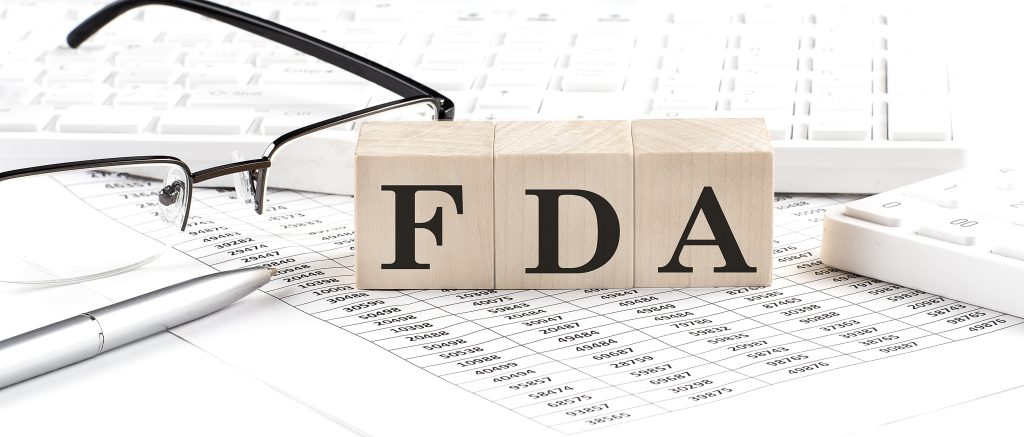
FDA "Approval" vs. "Clearance": What You Need to Know
Understanding the difference between FDA approval and clearance is critical when evaluating medical products. While both terms indicate FDA regulatory authorization, they apply to different types of products and regulatory pathways, each with unique implications for safety, efficacy, and market access.
What Is FDA Approval?
FDA approval is the gold standard for regulatory authorization. It is granted to pharmaceuticals, biologics, and high-risk medical devices after they undergo rigorous testing and evaluation. Products that achieve FDA approval have demonstrated their safety, efficacy, and quality through extensive preclinical studies, multiple phases of clinical trials, and a thorough review of scientific data.
This level of scrutiny assures healthcare providers and patients that the product meets the FDA’s strict standards. High-risk medical devices—like implants and life-supporting equipment—require FDA approval before being marketed. Approved products are continuously monitored through post-market surveillance to ensure their safety and effectiveness in real-world use.
What Is FDA Clearance?
FDA clearance applies to moderate-risk (Class II) and low-risk (Class I) medical devices. These devices follow a different regulatory path known as the 510(k) premarket notification process. Manufacturers must prove that their device is substantially equivalent to a legally marketed device, known as a predicate device, which was available before the 1976 Medical Device Amendments.
The 510(k) process involves submitting documentation that supports the device’s safety and effectiveness, demonstrating that it is on par with its predecessor. FDA clearance means the device can be marketed in the U.S., but it does not involve the same level of scrutiny as FDA approval.
Why the Distinction Matters
The distinction between FDA approval and clearance reflects the different levels of regulatory scrutiny required for various products:
- FDA Approval: Necessary for pharmaceuticals, biologics, and high-risk medical devices, involving extensive testing to ensure safety, efficacy, and quality.
- FDA Clearance: Applicable to moderate and low-risk devices, requiring proof of substantial equivalence to a predicate device via the 510(k) process.
Implications for Safety and Efficacy
FDA-approved products typically undergo more rigorous evaluation compared to FDA-cleared devices, especially concerning pharmaceuticals and biologics. However, FDA clearance does not equate to lower quality or safety. Cleared devices still meet regulatory standards and are subject to post-market surveillance to ensure ongoing safety and effectiveness.
FDA approval represents the highest level of regulatory authorization, indicating a product has passed a comprehensive review. FDA clearance, while also a form of authorization, applies to devices that have shown substantial equivalence to existing products and involves a different regulatory pathway. Understanding these distinctions helps healthcare professionals and consumers make informed decisions about medical products.
Can FDA Approval Be Revoked?
Yes, FDA approval can be revoked under certain critical circumstances. The FDA’s approval process is designed to ensure that medical products are safe, effective, and of high quality. However, approval is not permanent and can be revoked if new evidence or regulatory non-compliance surfaces.
When Can FDA Approval Be Revoked?
- New Safety Concerns:
- FDA approval may be revoked if post-market surveillance, adverse event reporting, or new scientific evidence reveals previously unknown risks. For instance, if a drug is found to cause severe side effects after being released to the market, the FDA can take swift action to protect public health. This may include withdrawing approval, mandating product recalls, or requiring safety labeling changes.
- Regulatory Non-Compliance:
- Manufacturers must adhere to stringent regulatory requirements, including Good Manufacturing Practice (GMP) standards and accurate adverse event reporting. If a manufacturer fails to comply, the FDA may revoke their product’s approval or impose penalties such as fines, warning letters, or injunctions to enforce compliance and safeguard public health.
- Changes in Risk-Benefit Profile:
- The FDA’s approval is based on a thorough evaluation of a product’s risk-benefit profile at the time of approval. Should new evidence emerge suggesting that the product’s risks now outweigh its benefits, the FDA can reassess its approval. This reassessment could involve further studies or consultations with advisory committees. If the product is deemed no longer beneficial, the FDA may revoke its approval or impose new usage restrictions.
Examples of Revoked Approvals
- Rofecoxib (Vioxx): In 2004, the FDA withdrew Vioxx, a pain medication, after it was linked to increased risks of heart attacks and strokes. This decision highlighted the need for ongoing evaluation of cardiovascular risks associated with nonsteroidal anti-inflammatory drugs (NSAIDs).
- Mibefradil (Posicor): In 1998, approval for the antihypertensive drug Posicor was revoked due to potentially fatal interactions with other medications. This case emphasized the importance of thorough drug interaction assessments during and after the approval process.
Impact on Market Availability
Revocation of FDA approval has significant market implications. A product removed from the market may limit treatment options for patients and healthcare providers. However, the FDA’s primary mission is to protect public health. Therefore, if a product’s risks are found to outweigh its benefits, the FDA will not hesitate to revoke approval to ensure patient safety. In such cases, the FDA may work closely with manufacturers to address safety issues, develop risk mitigation strategies, or identify alternative treatment options.
FDA approval can indeed be revoked if new safety concerns arise, if there is regulatory non-compliance, or if the product’s risk-benefit profile changes unfavorably. The FDA’s ultimate responsibility is to protect public health, and it takes decisive action when necessary to mitigate risks and ensure that medical products remain safe and effective. Stakeholders must stay vigilant, understanding that FDA approval is not a guarantee of permanence but a dynamic process that adapts to new information and evolving standards.
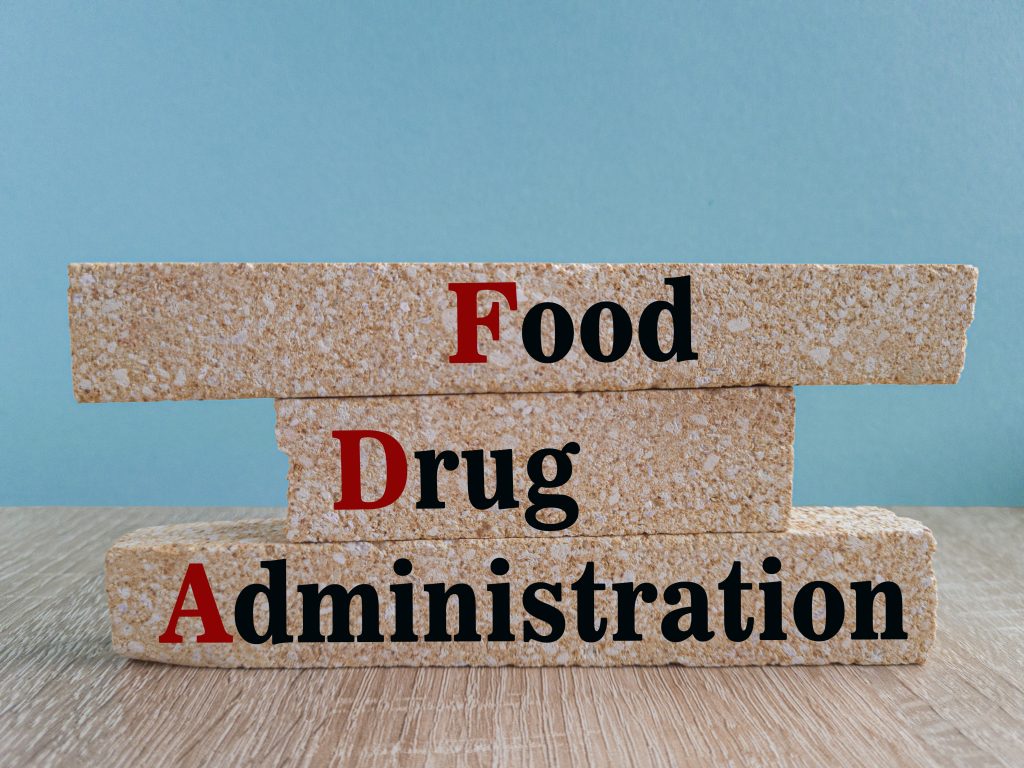
What Are the Risks of Using Non-FDA Approved Products?
Using non-FDA approved medical products presents serious risks to patients and consumers. Unlike FDA-approved products, which undergo rigorous evaluation for safety, efficacy, and quality, non-FDA approved items lack these critical assurances. Understanding these risks is essential for making informed healthcare decisions.
Lack of Safety and Efficacy Assurance
FDA approval is not just a formality; it’s a comprehensive process involving extensive scientific evaluation to confirm that a medical product is safe and effective. Non-FDA approved products, however, bypass this scrutiny. They may lack the necessary evidence to demonstrate their safety and efficacy, leaving patients vulnerable to unknown and potentially harmful effects. Without FDA oversight, these products might not have undergone essential preclinical testing or clinical trials, creating significant uncertainties for both patients and healthcare providers.
Serious Health Risks
The health risks associated with non-FDA approved products are profound and varied:
- Adverse Reactions: Non-approved drugs and medical devices may trigger adverse reactions or side effects that haven’t been adequately studied. Without thorough testing, there’s no guarantee of safety, and patients may be exposed to unrecognized dangers.
- Ineffectiveness: Non-FDA approved treatments may not be as effective as their FDA-approved counterparts, wasting time and resources on therapies that offer little to no benefit.
- Contamination or Quality Issues: Non-FDA approved products may be produced in substandard conditions, leading to contamination or poor quality. Without strict quality control measures, these products can pose serious risks to patients’ health.
- Dangerous Drug Interactions: Non-approved drugs might interact unpredictably with other medications, leading to dangerous or even life-threatening consequences. The lack of FDA oversight means there’s no systematic evaluation of potential drug interactions.
Legal and Regulatory Risks
The risks of using non-FDA approved products extend beyond health concerns:
- Legal Liability: Patients harmed by non-FDA approved products may have limited legal options against manufacturers or healthcare providers. Without FDA approval, manufacturers might not be held to the same legal standards for safety and labeling.
- Regulatory Enforcement: Healthcare providers who use non-FDA approved treatments may face regulatory actions from the FDA or other agencies, potentially violating professional standards and legal requirements.
- Insurance Coverage: Health insurance may not cover non-FDA approved treatments, leaving patients to shoulder the full financial burden. Insurers often deem these treatments experimental or investigational and may deny coverage.
Real-World Examples of Harm
There are numerous cases where non-FDA approved products have caused significant harm:
- Contaminated Supplements: Some non-FDA approved dietary supplements have contained undeclared or harmful ingredients, leading to severe health issues.
- Unapproved Medical Devices: Certain non-FDA approved medical devices, like specific breast implants or surgical tools, have been linked to complications and failures due to a lack of regulatory oversight.
- Unapproved Drugs: Drugs marketed as “miracle cures” or “alternative therapies” without FDA approval have often been found to be ineffective or dangerous, exposing patients to serious risks.
The use of non-FDA approved products poses significant and avoidable risks. FDA approval is a critical safeguard, ensuring that medical products meet established standards for safety, efficacy, and quality. Patients and healthcare providers must prioritize FDA-approved treatments to protect health and ensure positive outcomes. By understanding the dangers of non-FDA approved products, informed decisions can be made that prioritize patient safety and well-being.
Conclusion
FDA approval is more than a regulatory formality—it’s a cornerstone of public health that guarantees the safety, efficacy, and quality of medical products. Throughout this article, we’ve emphasized the vital importance of FDA approval, addressing common concerns and highlighting the regulatory process that protects both patients and healthcare providers.
FDA approval is the gold standard, signifying that a medical product has passed stringent evaluations for safety, efficacy, and quality. This approval instills confidence in both healthcare providers and patients, ensuring that only reliable and effective treatments are available. The FDA’s approval process is exhaustive, involving multiple stages—preclinical testing, clinical trials, regulatory review, and ongoing post-market surveillance. Manufacturers must provide comprehensive data to meet the FDA’s high standards, ensuring every approved product is thoroughly vetted for safety and effectiveness.
By focusing on FDA-approved treatments, patients can avoid the risks associated with unapproved products, such as adverse reactions, contamination, or ineffectiveness. This focus on safety promotes better health outcomes and shields the public from potential harm. The FDA doesn’t stop at approval; it maintains vigilant oversight of approved products throughout their lifecycle. The agency can enforce regulatory actions, including revoking approval if safety concerns arise or if a product no longer meets the required standards. This ongoing oversight ensures that patient safety remains a priority.
Being informed about FDA approval empowers patients and healthcare providers to make safer, more effective healthcare choices. Prioritizing FDA-approved products fosters trust in medical treatments and enhances the overall quality of care. As healthcare evolves with advancements in science and technology, FDA approval will continue to be essential in ensuring the safety and efficacy of new medical products. The FDA’s commitment to rigorous evaluation and oversight is crucial as new challenges emerge. By staying informed about the FDA’s regulatory processes and advocating for evidence-based practices, all stakeholders can support a healthcare system that prioritizes patient safety, encourages innovation, and delivers positive health outcomes.
In summary, FDA approval is not just a regulatory requirement; it is a powerful endorsement of a product’s safety and effectiveness. The FDA’s unwavering commitment to scientific rigor and public transparency safeguards the health and well-being of individuals and communities across the nation. Learn more about BMI Doctors’ semaglutide program, manufactured in a compounding pharmacy.
Research Citations
Food and Drug Administration. (n.d.). FDA Basics. U.S. Food and Drug Administration. https://www.fda.gov/about-fda/fda-basics.
Institute of Medicine (US) Forum on Drug Discovery, Development, and Translation. (2014). Transforming Clinical Research in the United States: Challenges and Opportunities: Workshop Summary. National Academies Press (US). https://www.ncbi.nlm.nih.gov/books/NBK253838/.
U.S. Food and Drug Administration. (2020). Understanding New Drug and Biologic Approvals. U.S. Food and Drug Administration. https://www.fda.gov/drugs/understanding-new-drug-and-biologic-approvals.
U.S. Food and Drug Administration. (2020). 510(k) Premarket Notification. U.S. Food and Drug Administration. https://www.fda.gov/medical-devices/premarket-notification-510k.
U.S. Food and Drug Administration. (2020). Premarket Approval (PMA). U.S. Food and Drug Administration. https://www.fda.gov/medical-devices/premarket-approval-pma.
U.S. Food and Drug Administration. (2020). How to Report a Problem with Food. U.S. Food and Drug Administration. https://www.fda.gov/food/problem-reporting/how-report-problem-food.
U.S. Food and Drug Administration. (2020). Postmarket Requirements and Commitments. U.S. Food and Drug Administration. https://www.fda.gov/drugs/development-resources/postmarket-requirements-and-commitments.
U.S. Food and Drug Administration. (2020). Dietary Supplements. U.S. Food and Drug Administration. https://www.fda.gov/food/dietary-supplements.
U.S. Food and Drug Administration. (2020). How FDA Evaluates Regulated Products: Drugs. U.S. Food and Drug Administration. https://www.fda.gov/drugs/how-fda-evaluates-regulated-products-drugs.
U.S. Food and Drug Administration. (2020). Medical Device Classification Product Codes – Guidance for Industry and Food and Drug Administration Staff. U.S. Food and Drug Administration. https://www.fda.gov/regulatory-information/search-fda-guidance-documents/medical-device-classification-product-codes.
These resources provide comprehensive information about the FDA approval process, regulatory requirements, and post-market surveillance, serving as valuable references for understanding the complexities of medical product regulation in the United States.
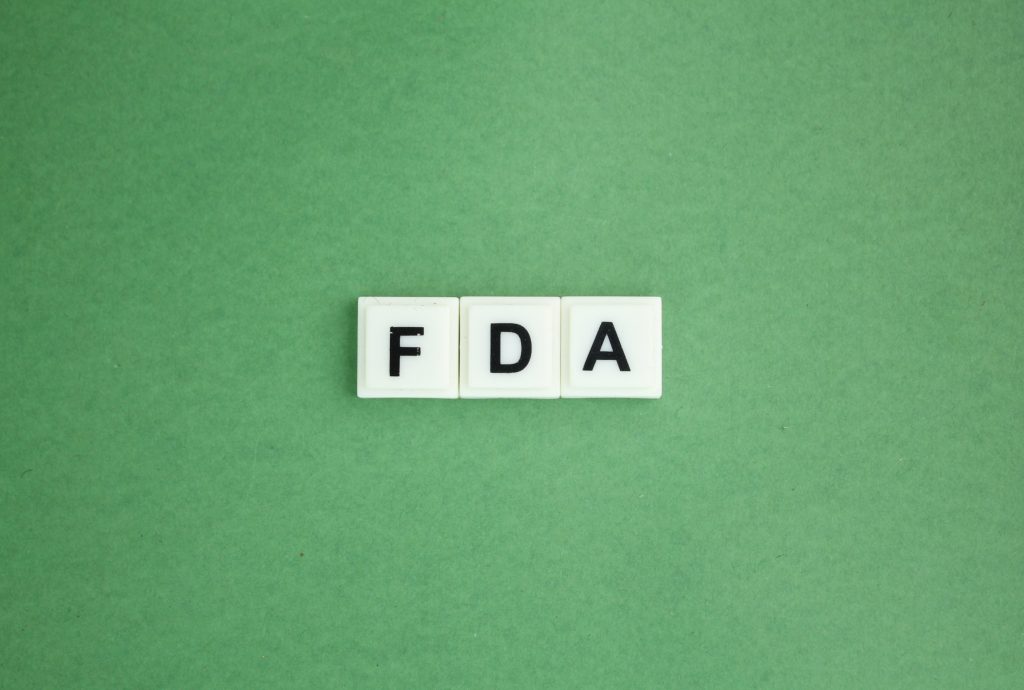
Questions and Answers: What does FDA Approved mean and why does it matter?
The FDA’s Center for Drug Evaluation and Research evaluates drugs to ensure they are safe and effective for human use in the United States. Biological products are evaluated by the FDA’s Center for Biologics Evaluation and Research.
No, the FDA itself does not test drugs. It’s the responsibility of the company seeking approval to conduct tests and then submit the data to the FDA for review.
Clinical trials are studies with human subjects to determine a drug’s effectiveness and possible side effects. These trials provide essential information for the FDA to decide whether or not a drug should be approved.
The drug approval process time varies. A standard review can take up to 10 months, while a Priority Review for drugs offering major treatment advances or providing a treatment where none existed can take about six months.
The types include Investigational New Drug (IND), New Drug Application (NDA), Abbreviated New Drug Application (ANDA), and Biologic License Application (BLA).
No, OTC medications have a different process. The FDA reviews the active ingredients and labeling of therapeutic classes of drugs, and companies can market an OTC product without FDA pre-approval if it conforms to a final monograph.
FDA approval means that the agency has determined the benefits of the item outweigh its potential risks. This applies to a wide range of items, including drugs, medical devices, food, and cosmetics.
FDA approval is crucial because it validates the need for research on how drugs work on various populations, including children, and helps determine appropriate dosages, administration routes, and any potential drug interactions.
To receive FDA approval, a manufacturer must prove the item is safe and effective. This involves a series of steps including drug development, animal testing, clinical trials, and a review process by the FDA.
The FDA regulates not only food and drugs but also supplements, animal food, items that emit radiation, and other products. This broad scope of regulation is essential for protecting public health from low-quality or harmful products.

Dr. Melissa VanSickle
Dr. Melissa Vansickle, MD is a family medicine specialist in Onsted, MI and has over 24 years of experience in the medical field. She graduated from University of Michigan Medical School in 1998. She is affiliated with medical facilities Henry Ford Allegiance Health and Promedica Charles And Virginia Hickman Hospital. Her subspecialties include General Family Medicine, Urgent Care, Complementary and Integrative Medicine in Rural Health.
